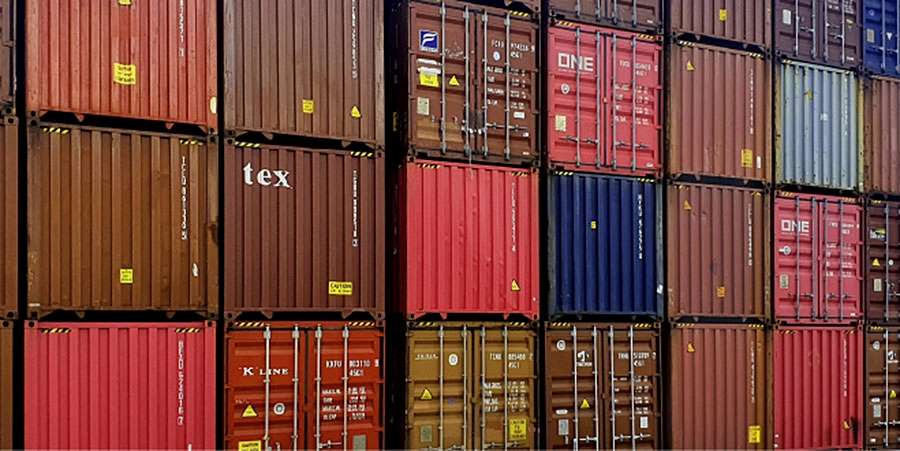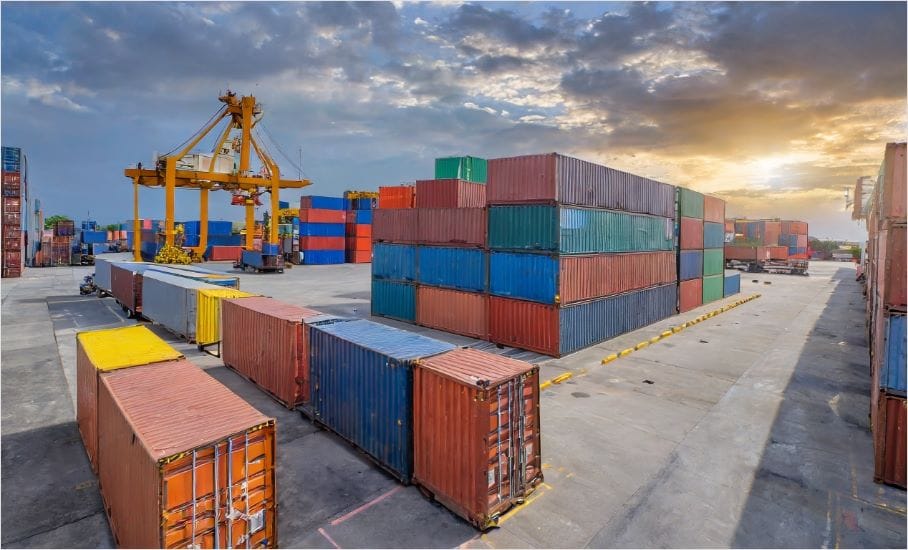In international cargo transportation, SOC and COC (are two common container types. Understanding their differences and characteristics will help logistics companies and cargo owners make informed decisions when choosing the appropriate transportation solution. This article will introduce SOC and COC in detail functions and differences.
Learn more: How to Choose 20ft and 40ft Containers

What are SOC Containers?
A shipper-owned container (SOC) is a metal shipping container that is owned exclusively by an individual or business. Typically, the shipper has full ownership of the cargo container and arranges its transportation by purchasing space on the carrier’s vessel.
Most often, large importers that handle large volumes of regular cargo, such as IKEA, Walmart, and other companies that ship from China, usually own SOC containers.
In addition, SOCs offer a tailored approach, enabling shippers to use them as needed to fit their specific shipping schedules and cargo requirements.
What are COC Containers?
A COC, also known as a carrier-owned container, is an ocean shipping container that is owned and managed by a container liner company or carrier. Unlike an SOC, a COC container belongs to the carrier’s fleet of container ships.
With a COC, the shipper pays the carrier an all-inclusive fee to transport the cargo from point A to point B, and the carrier handles the intermediary processes, including providing the container.
Once delivery is complete, the COC container will be returned to the carrier, who will then lease it to another shipper.
It is worth noting that depending on the circumstances, additional charges may be incurred when using a COC container, such as demurrage, detention charges.
The Difference Between SOC and COC
Features of SOC:
- Cost-effectiveness: Long-term use of SOC can reduce rental costs, especially for cargo owners who transport frequently.
- Flexibility: SOC can customize container specifications according to the needs of cargo owners, increasing transportation flexibility.
- Control: Cargo owners have full control over the use and maintenance of containers, reducing shipping companies’ dependence on containers.
But management is complicated, with issues such as storage, repair and return. Large capital investment is not suitable for short-term transportation
Features of COC:
- Simple and fast: COC is a container provided by the carrier. The cargo owner does not need to care about the management and maintenance of the container, saving a lot of time and energy.
- Suitable for short-term shipping: COC is an ideal choice for cargo owners who do not need to use containers for a long time.
- Universally available: COC is widely available in the shipping market, easy to find, and is especially suitable for short-term or one-time shipping needs.
However, flexibility is poor and cargo owners cannot fully control the usage of containers.

Cost Structure and Applicable Scenarios of SOC and COC
SOC Cost structure:
- Initial cost: A higher initial investment cost is required when purchasing SOC.
- Long-term maintenance: Shippers need to regularly inspect, repair and manage containers, which also means long-term maintenance costs.
- Storage costs: If the container is empty during transportation, the shipper also needs to bear the storage and storage costs.
Mainly used for bulk goods and long-term transportation, it can save container rental costs and ensure the efficiency of container use. SOC enables shippers to better control the loading, transportation and unloading process of goods, ensuring the safety and quality of goods during transportation
COC cost structure:
- Leasing costs: COC costs mainly include leasing costs, which vary depending on the transportation time and container type.
- Return costs: In some cases, the carrier will require return costs, especially when there is no cargo in the container.
Mainly used for short-term or temporary transportation, suitable for small businesses and shippers who do not want to invest too much money. COC meets the transportation needs of the shipping company’s own routes, improves transportation efficiency and reduces operating costs.
How to Deal With the Operation and Risks of SOC and COC
yingduiThe operation and risks of SOC and COC require a series of measures:
- Establish a sound container management system: including the purchase, leasing, maintenance, tracking and scrapping of containers.
- Strengthen quality control: ensure that containers meet international standards and transportation requirements, and improve the safety and quality of goods.
- Optimize transportation plans: formulate the best transportation plan based on the nature, quantity and transportation needs of the goods to reduce transportation costs.
- Establish a risk warning mechanism: predict and evaluate possible risks and formulate corresponding response measures.
SOC and COC each have their own advantages and disadvantages. SOC is suitable for long-term, bulk cargo transportation, while COC is more suitable for short-term and flexible transportation needs. Through this article, we can understand the characteristics of these container types and help enterprises optimize logistics processes, reduce transportation costs and improve efficiency.
